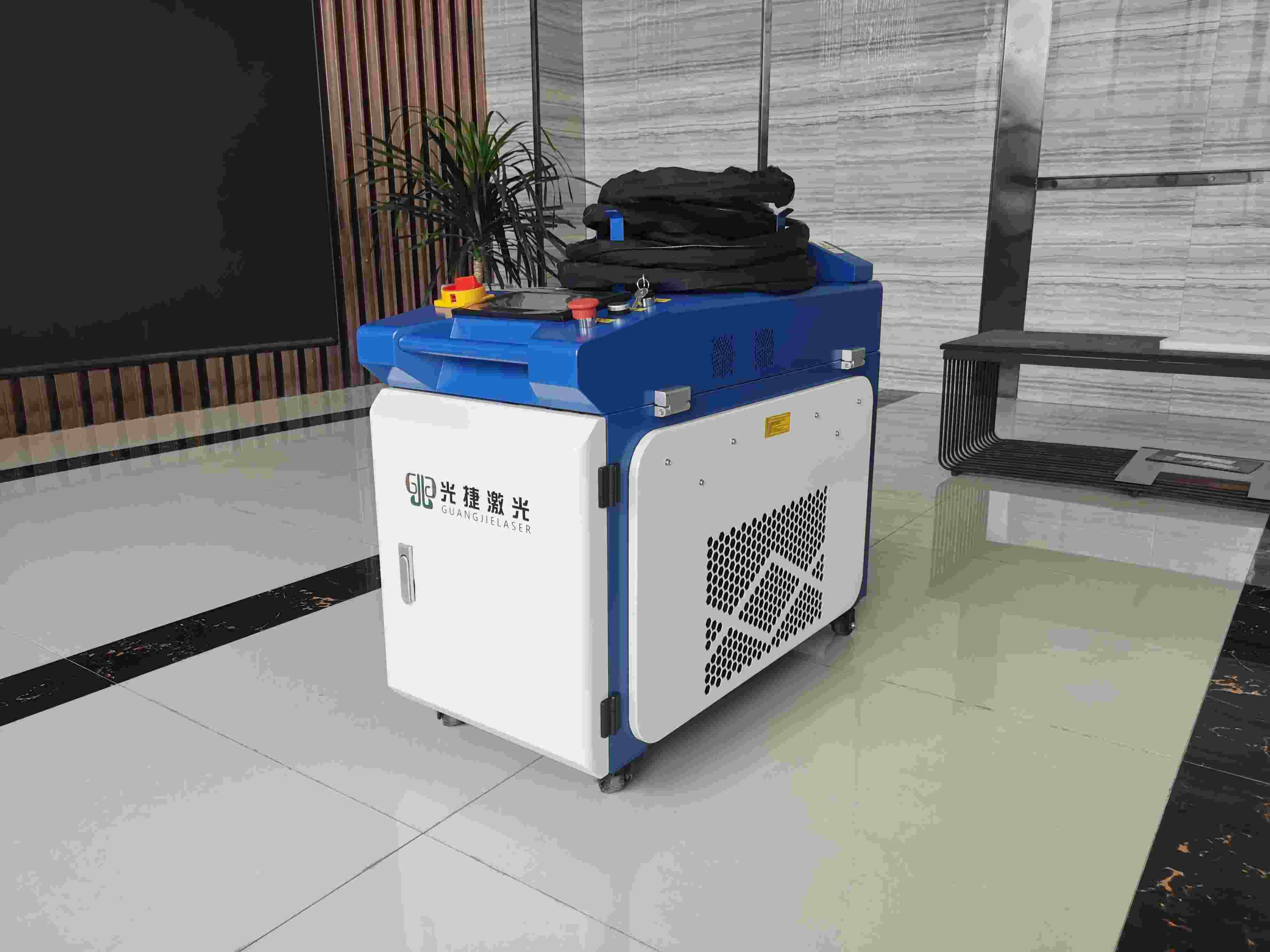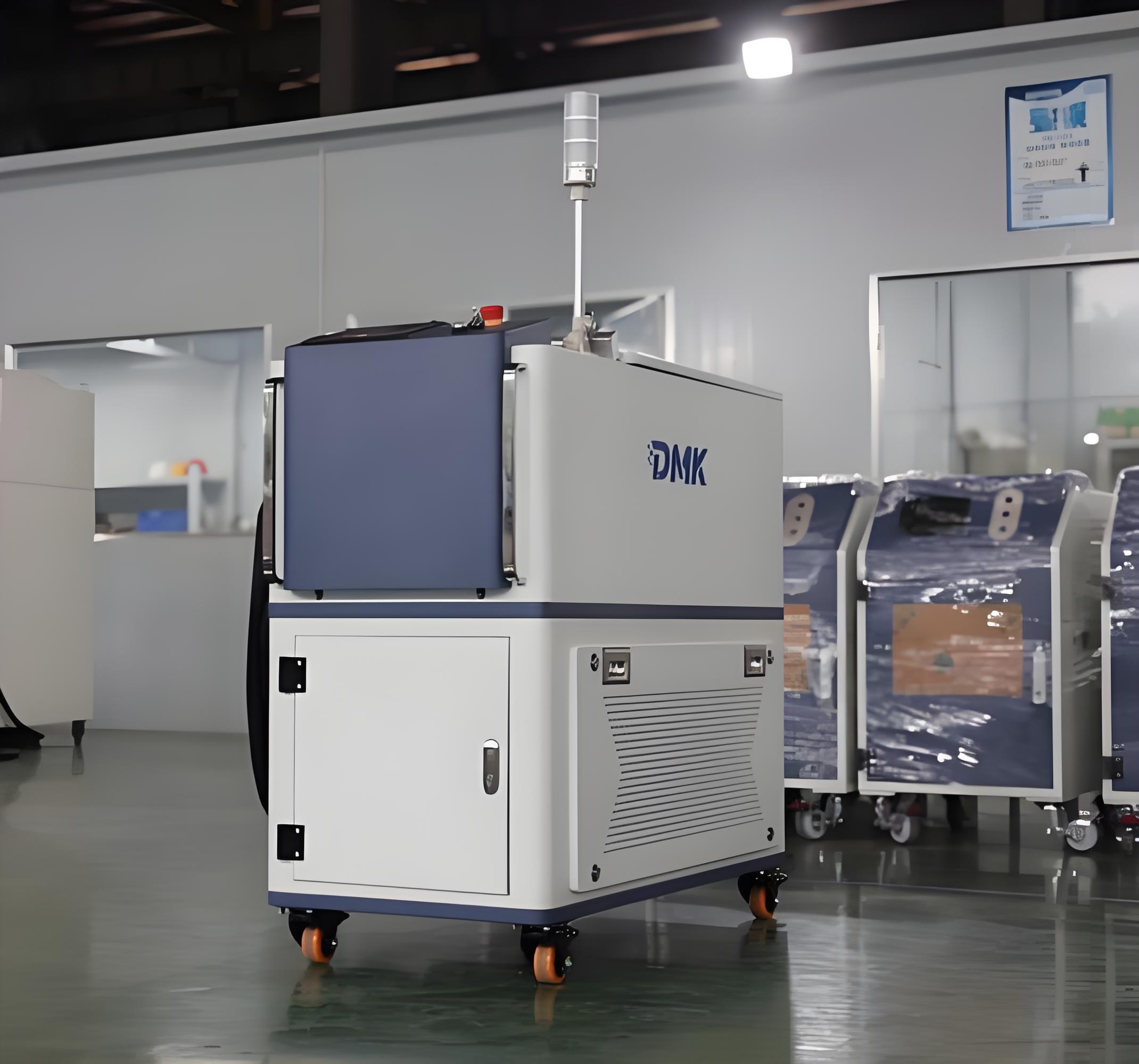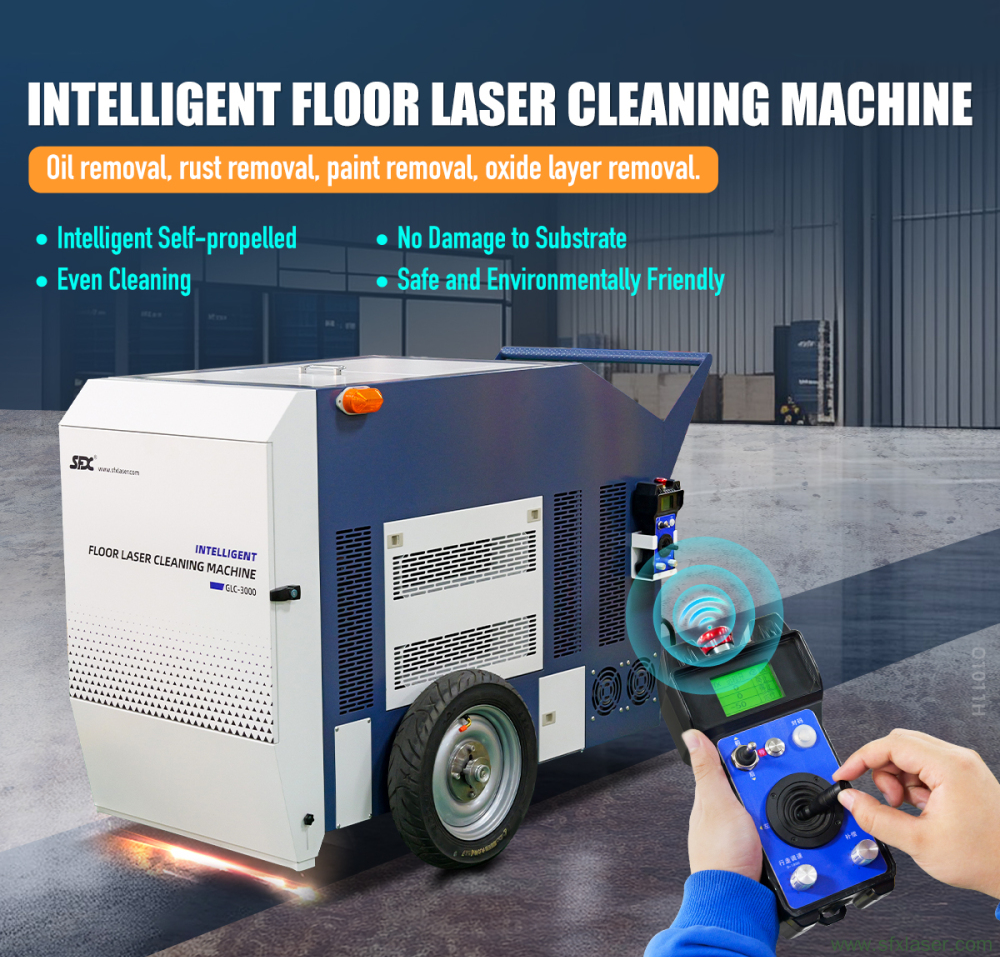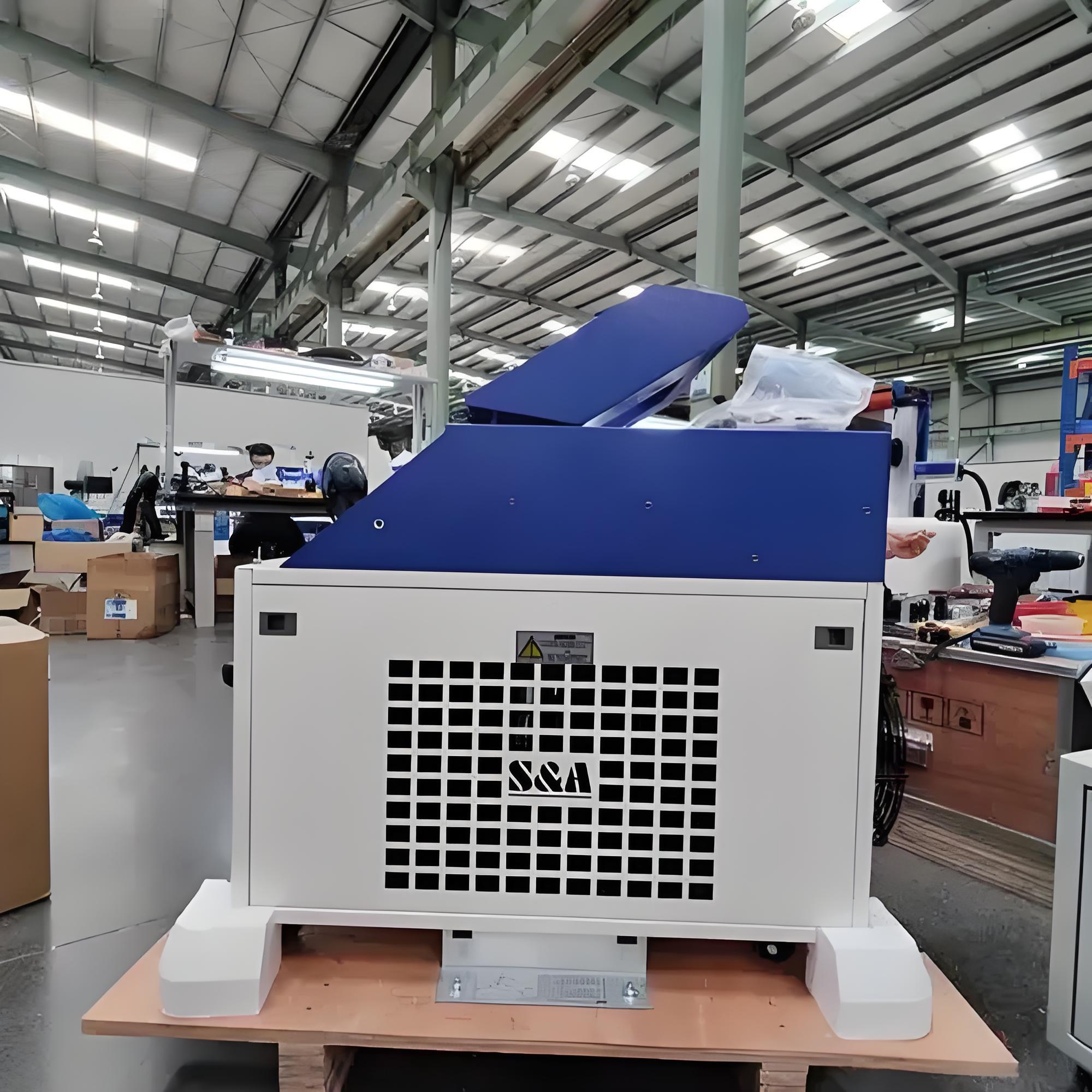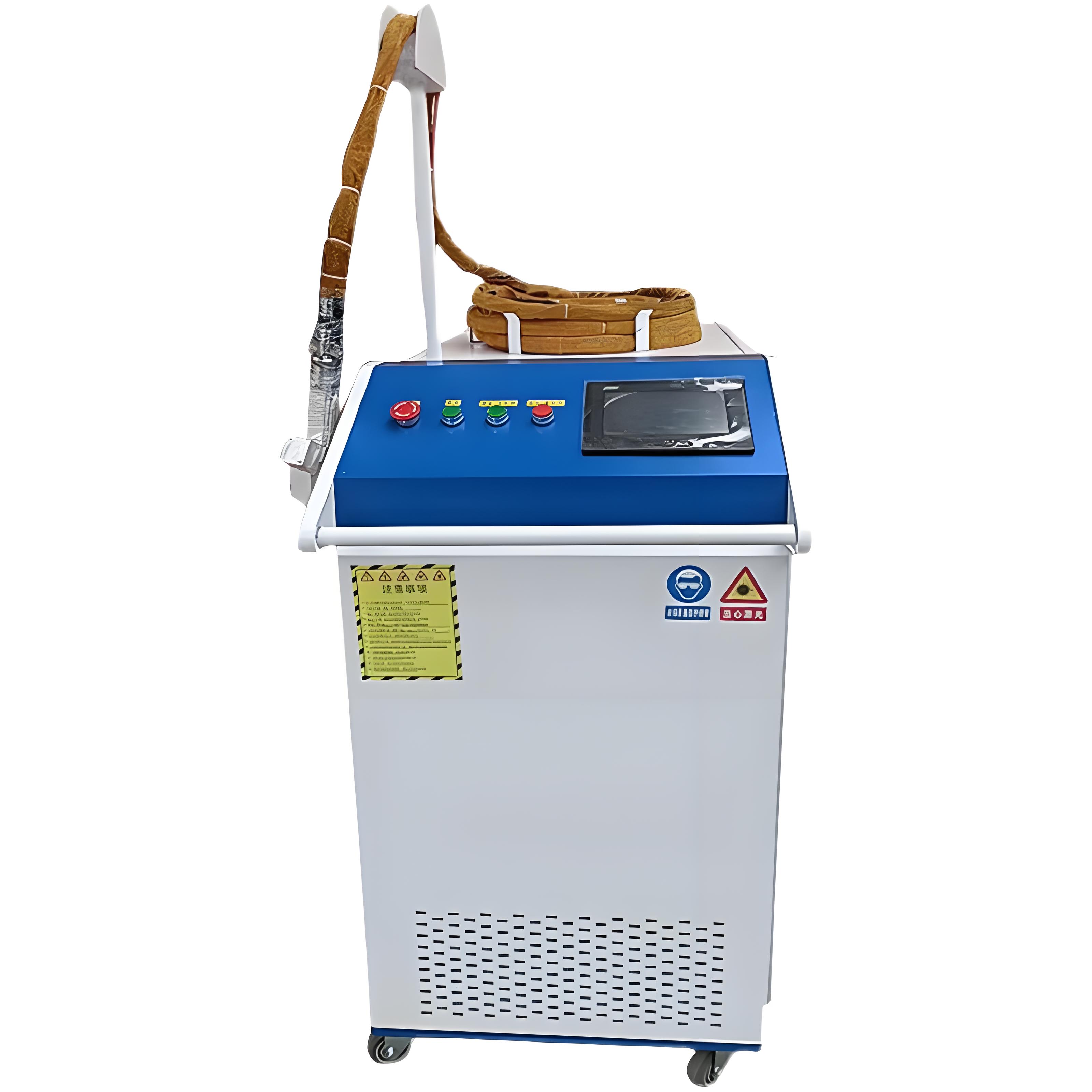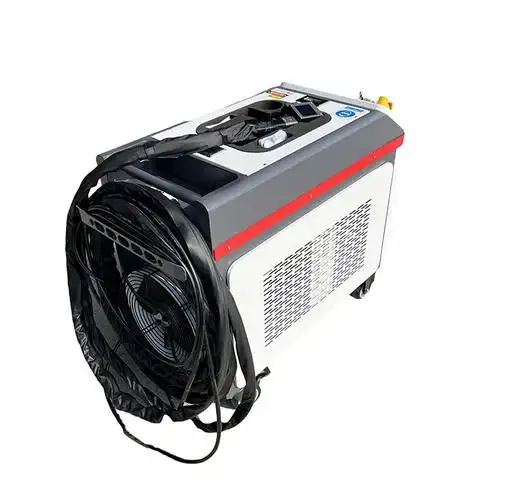In the dynamic field of industrial cleaning, laser rust removal machines have emerged as a game-changer, offering precision, efficiency, and environmental friendliness. As someone deeply entrenched in this industry for years, I’ve witnessed firsthand the evolution of these machines and the critical role that fiber optic cables play in their operation. One question that frequently arises is whether the fiber optic cable of a laser rust removal machine can extend to a staggering 100 meters. In this article, I’ll delve into this topic, drawing from my extensive experience to provide a comprehensive answer.
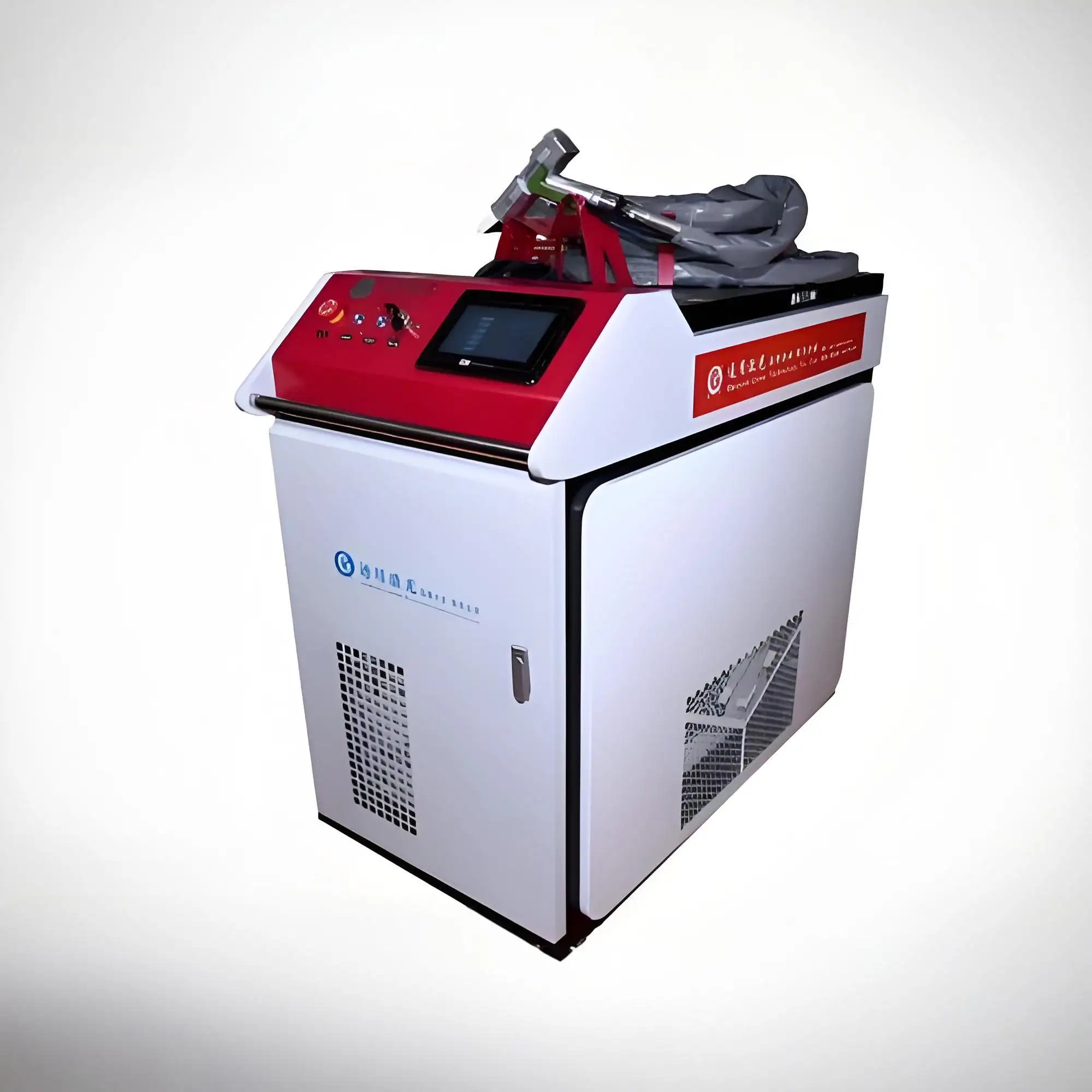
Understanding the Basics of Fiber Optic Cables in Laser Rust Removal
Before we tackle the question at hand, it’s essential to understand the fundamentals of how fiber optic cables function within a laser rust removal machine. These cables are the lifelines that transmit laser energy from the source to the target surface, enabling precise and controlled rust removal. The quality, length, and type of fiber optic cable directly impact the machine’s performance, efficiency, and safety.
The Role of Fiber Optic Cables
Fiber optic cables in laser rust removal machines serve several critical functions:
Energy Transmission: They carry high-intensity laser beams from the laser generator to the nozzle or focusing lens, ensuring minimal energy loss along the way.
Flexibility: Unlike rigid metal conduits, fiber optic cables offer flexibility, allowing operators to maneuver the laser head with ease, even in tight spaces.
Safety: By confining the laser beam within the cable, they reduce the risk of accidental exposure to harmful laser radiation, protecting both operators and bystanders.
Factors Influencing Fiber Optic Cable Length
Now, let’s address the core question: Can the fiber optic cable of a laser rust removal machine reach 100 meters? The answer isn’t straightforward, as it depends on several factors:
1. Laser Power and Type
Different laser types (e.g., fiber lasers, CO2 lasers, Nd:YAG lasers) have varying power outputs and beam characteristics. Higher-power lasers generally require shorter fiber optic cables to minimize energy loss and maintain beam quality. For instance, a high-power fiber laser used for heavy-duty rust removal might struggle to maintain optimal performance over a 100-meter cable due to significant attenuation (signal loss).
2. Fiber Optic Cable Quality
The quality of the fiber optic cable itself is paramount. High-quality cables with low attenuation coefficients and robust construction can transmit laser energy more efficiently over longer distances. Manufacturers often specify the maximum recommended length for their cables based on rigorous testing and quality control measures.
3. Beam Delivery System Design
The design of the beam delivery system, including the focusing lens, nozzle, and any intermediate optics, also plays a role. A well-designed system can compensate for some of the energy loss and beam distortion that occurs over long cable lengths, but there are practical limits to what can be achieved.
4. Application Requirements
The specific requirements of the rust removal application must also be considered. For some applications, such as large-scale shipbuilding or bridge maintenance, longer cable lengths might be necessary to reach distant or hard-to-access areas. In such cases, manufacturers may offer specialized solutions, such as reinforced cables or active beam delivery systems, to extend the reach while maintaining performance.
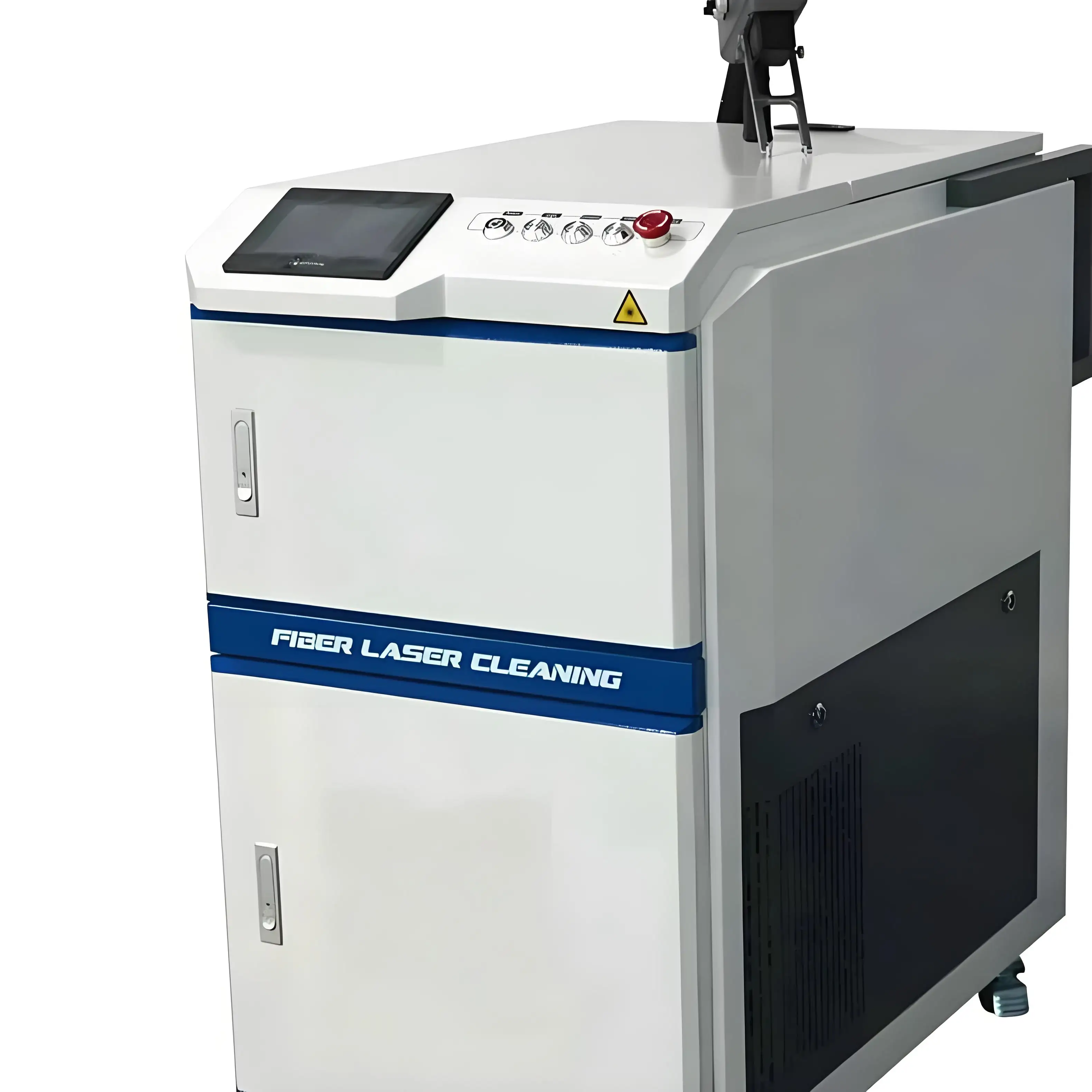
Real-World Examples and Considerations
To provide a more concrete perspective, let’s examine some real-world scenarios and considerations:
Standard Fiber Optic Cable Lengths
Most commercially available laser rust removal machines come with fiber optic cables ranging from a few meters to around 30 meters. These lengths are sufficient for the majority of applications, offering a good balance between flexibility and performance.
Table 1: Typical Fiber Optic Cable Lengths for Laser Rust Removal Machines
| Machine Type | Typical Cable Length (m) | Maximum Recommended Length (m) |
|---|---|---|
| Portable Handheld | 5-10 | 15 |
| Medium-Duty Industrial | 10-20 | 30 |
| Heavy-Duty Industrial | 20-30 | 50 (with limitations) |
Extended-Length Solutions
For applications requiring longer cable lengths, some manufacturers offer specialized solutions. These might include:
Reinforced Cables: Cables with additional layers of protection and support to minimize bending losses and physical damage.
Active Beam Delivery Systems: Systems that incorporate amplifiers or regenerators along the cable to boost the laser signal and compensate for attenuation.
Fiber Optic Relays: Devices that receive the laser beam from one cable and transmit it to another, effectively extending the reach without sacrificing performance.
However, it’s important to note that these solutions come with their own set of challenges and limitations. Reinforced cables can be bulky and less flexible, while active systems and relays add complexity and cost to the overall setup.
Practical Considerations for 100-Meter Cables
When considering a 100-meter fiber optic cable for a laser rust removal machine, several practical issues arise:
Energy Loss: Even with high-quality cables, a 100-meter length would result in significant energy loss, reducing the effective power at the target surface and potentially compromising the rust removal process.
Beam Quality: Longer cables can introduce beam distortion and divergence, making it difficult to achieve the precise focusing required for effective rust removal.
Safety and Handling: A 100-meter cable would be cumbersome to handle and store, increasing the risk of accidents and damage. Additionally, the increased surface area of the cable could pose a safety hazard if not properly shielded.
Cost: Custom-made, high-quality 100-meter fiber optic cables are expensive to produce and may not be cost-effective for most applications.
Alternative Solutions for Long-Distance Rust Removal
Given the challenges associated with 100-meter fiber optic cables, what are the alternatives for long-distance rust removal applications? Here are a few viable options:
1. Mobile Laser Units
Instead of extending the cable length, consider using mobile laser units that can be positioned closer to the work area. These units can be mounted on trucks, trailers, or even drones, providing flexibility and reach without the need for excessively long cables.
2. Remote Laser Sources
Another approach is to use a remote laser source located near the work area, with a shorter fiber optic cable connecting it to the laser head. This setup reduces the cable length while still allowing for some degree of mobility.
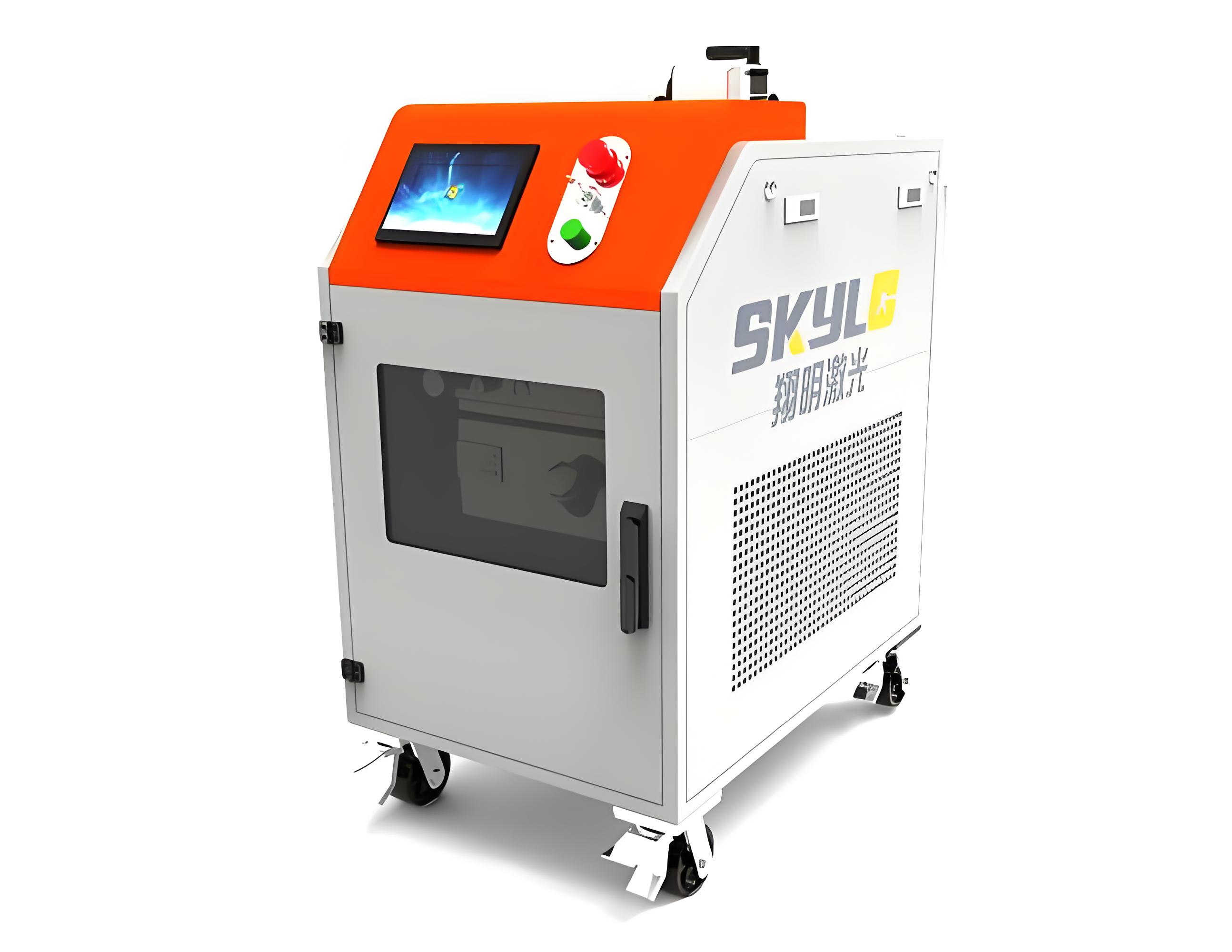
3. Robotic Arms or Automated Systems
For repetitive or large-scale rust removal tasks, robotic arms or automated systems can be employed. These systems can be programmed to navigate complex surfaces and reach distant areas, eliminating the need for long cables altogether.
4. Hybrid Approaches
In some cases, a combination of the above solutions might be the most effective. For example, a mobile laser unit could be used in conjunction with a robotic arm to achieve both flexibility and precision in long-distance rust removal.
Conclusion: Weighing the Pros and Cons
After exploring the various factors and considerations, it’s clear that while theoretically possible, a 100-meter fiber optic cable for a laser rust removal machine presents significant challenges in terms of performance, safety, and cost-effectiveness. For most applications, shorter cables in the range of 5 to 30 meters offer a more practical and efficient solution.
However, if your specific application truly requires long-distance rust removal capabilities, don’t despair. By exploring alternative solutions such as mobile laser units, remote laser sources, robotic arms, or hybrid approaches, you can find a setup that meets your needs without compromising on performance or safety.
In the end, the key is to carefully assess your requirements, consult with experienced manufacturers or suppliers, and choose a solution that balances flexibility, efficiency, and cost. With the right approach, you can achieve outstanding rust removal results, even in the most challenging environments.
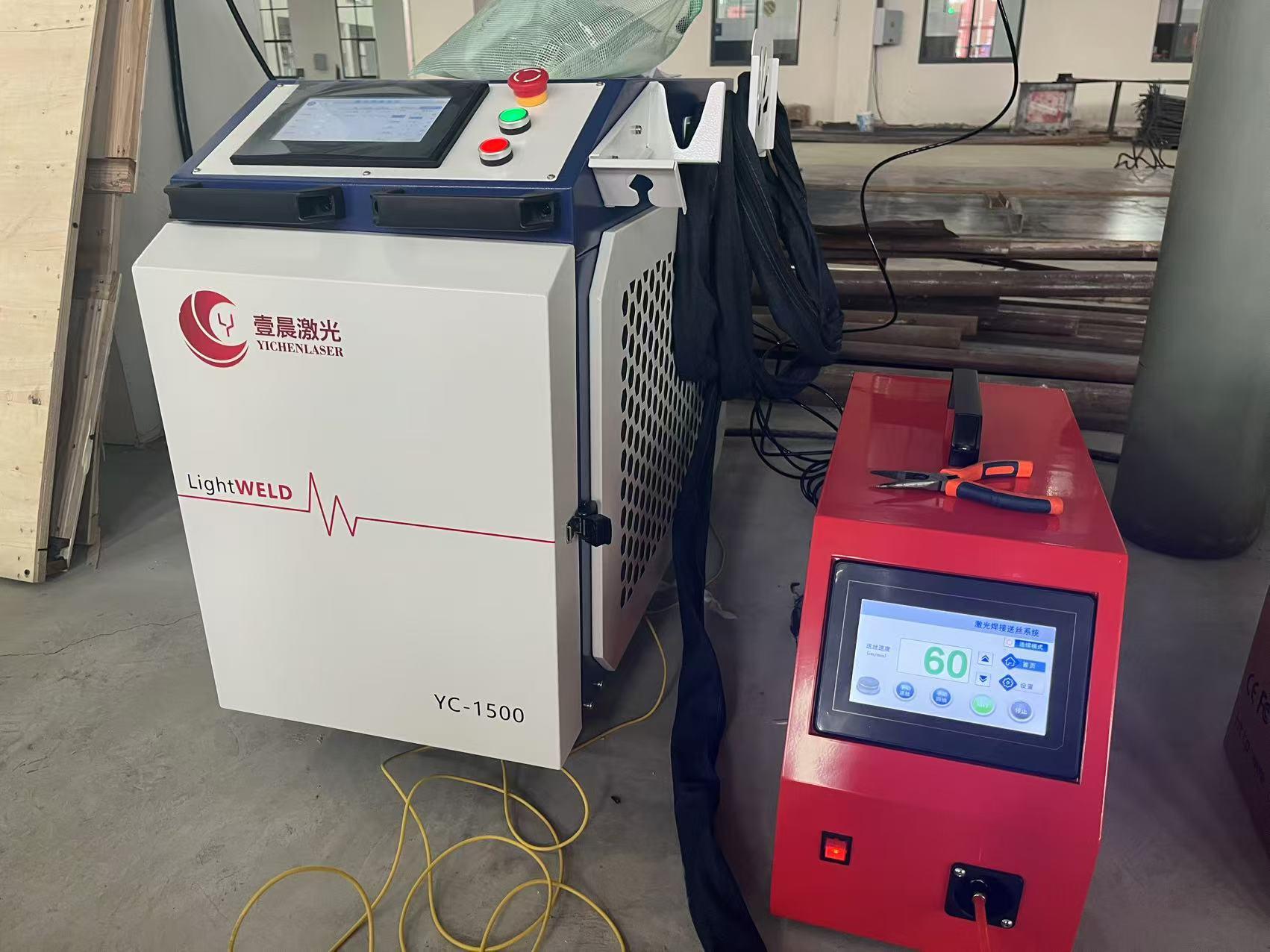
Related Q&A
Q: What is the maximum safe length for a fiber optic cable in a laser rust removal machine?
A: The maximum safe length depends on several factors, including the laser power, cable quality, and application requirements. Generally, most manufacturers recommend cables up to 30 meters for optimal performance and safety. For longer lengths, consult with the manufacturer to explore specialized solutions.
Q: Can I use a fiber optic extender to increase the length of my laser rust removal machine’s cable?
A: While fiber optic extenders or relays exist, their use in laser rust removal applications is limited due to potential energy loss and beam distortion. It’s best to consult with the manufacturer before attempting to extend the cable length using such devices.
Q: Are there any regulations or safety standards governing the use of long fiber optic cables in laser rust removal machines?
A: Yes, there are various international and national regulations and standards governing the safe use of laser equipment, including fiber optic cables. These standards typically address issues such as maximum power levels, beam quality, and safety interlocks. Always ensure that your equipment complies with relevant regulations and standards to protect both operators and bystanders.

